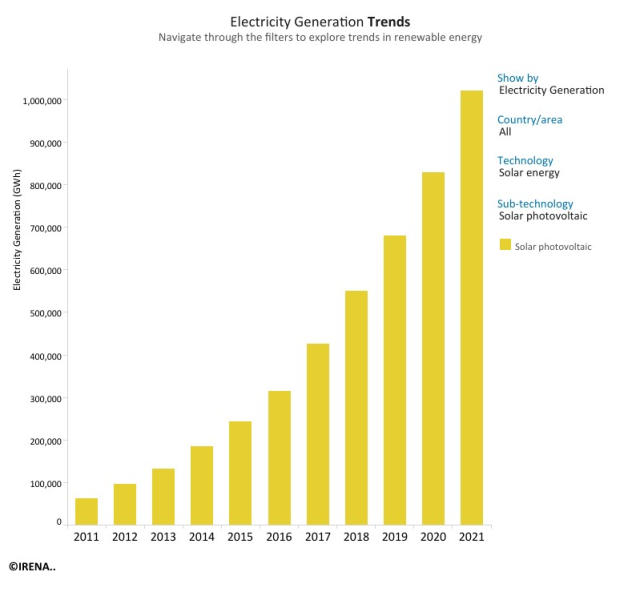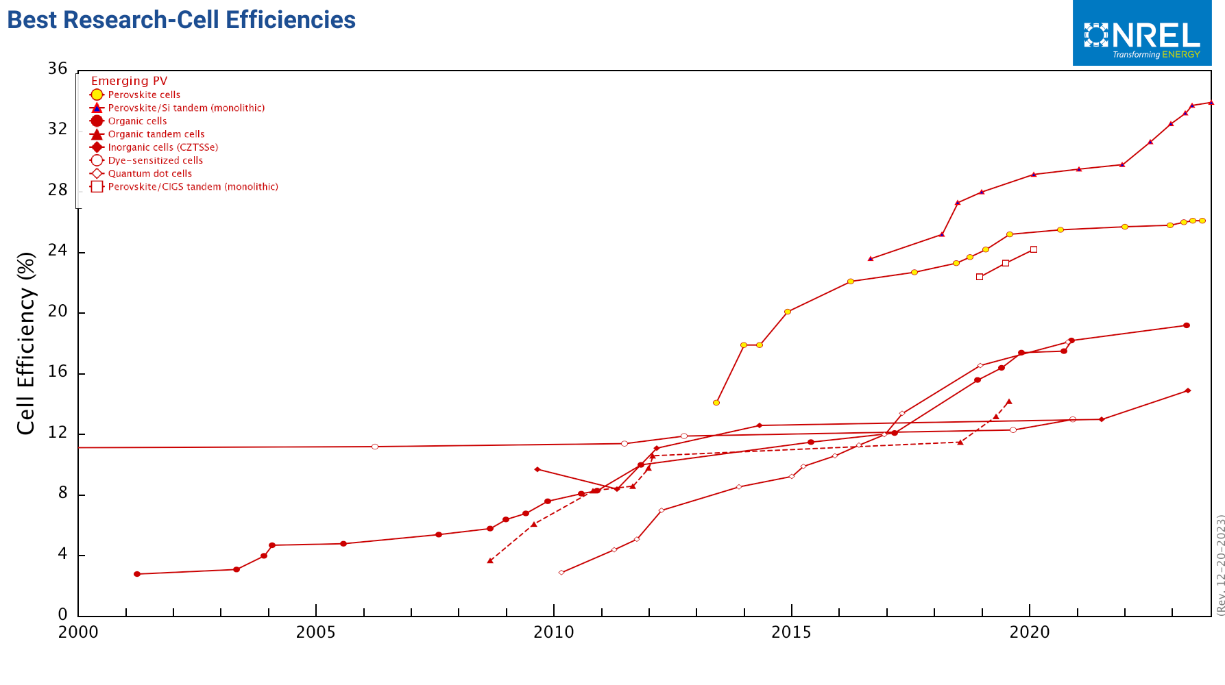The emergence of perovskite-based photovoltaics
The climate crisis arising from greenhouse gas emissions has led to a greater emphasis on energy security, and affordability, to ensure a smooth energy transition. The decarbonization of the energy sector will promote a reduction in carbon emissions and will minimize catastrophic natural disasters. The deployment of low-carbon technology towards a sustainable and clean energy future is paramount, further, low-carbon-based technologies will continue to witness exponential growth and are creating new jobs, whereas fossil fuel-based energy generation demand is slowing down.
The Sun is the best gift to humanity and through photovoltaic (PV) we can convert sunlight directly into electricity. Uncovering the massive potential of PV is critical to achieve climate targets. PV is among the fastest-growing renewable energy technologies and is playing a key role in the global energy transformation (Figure 1). The total installed capacity of solar PV now surpasses the terawatt scale, rising from a mere 100 GW of solar capacity in 2012, while also achieving a 90% decrease in solar costs between 2009 and 2021 thus making solar a global phenomenon to deploy this green technology.

The cost of manufacturing solar panels has dropped histrionically in the past decade, making them not only affordable but also the cheapest form of electricity, and in many parts of the world the levelised cost of electricity is now cheaper than burning fossil fuels.
To successfully achieve the Paris climate goals demands accelerating the energy transition through a battery of technologies. By 2050 PV will be the second-largest electricity generation source, only to be trailed by wind power, and will generate nearly 25% of our total electricity needs. These transformative scenarios can be achieved through significantly scaling up PV manufacturing, deployment capacity, and new technologies. The PV industry is fast-evolving and is changing rapidly with a high appetite for technological innovation. Silicon remains a first-generation technology, a key driver for deployment and development, with nearly 90% of the market share. Thin film PV technologies entered as second-generation PV technologies but are not cost-competitive.

Emerging PV – which includes organic, dye-sensitized and perovskite solar cells – offers unparalleled opportunities in terms of aesthetics and flexibility. Perovskites have emerged as a game-changing material for research and development in the PV sector. In just a decade, it has shown on-par performance (Figure 2) with Silicon while consuming an order of magnitude lower materials and is independent of single materials 1. Perovskite-based PV consumes an ultra-thin layer of material, and this makes perovskite cost-effective along with low manufacturing cost processing. It can be printed like a newspaper or can be deposited on flexible plastic substrates for technological advancement 2
.

Perovskite is a semiconductor pigment, which absorbs light and generates an electron-hole pair, which then travels to their respective electrode to be collected. It can be formulated in ink and can be printed for mass-scale production. Perovskites show high absorbance coefficients in the visible range of the electromagnetic spectrum, and the band gap can be tuned. It means it has complementary absorption with silicon solar cells, and this allows to fabrication of tandem solar cells that have performance beyond the Shockley–Queisser limit.
The emergence of new device architectures has also enabled higher efficiency. The silicon-perovskite tandem offers exciting perspectives, however, the technical barriers need to be solved for its long-term stability and manufacturability. Taking into consideration the push for growing solar capacity across the globe, developing new technological solutions will enable market conditions that are paramount for future grid connectivity as well as building integration in terms of windows and rooftops. Perovskite-based PV technology are potentially suited for mass-scale production and is armed with its low energy payback time and flexibility.
Authors
Shahzada Ahmada,b, James H. Martin,a Samrana Kazima,b
aBCMaterials, Basque Center for Materials, Applications and Nanostructures, UPV/EHU Science Park, 48940 Leioa, Spain
bIkerbasque, Basque Foundation for Science, 48011 Bilbao, Spain.
References
- S. Kazim, M. K. Nazeeruddin, M. Grätzel, S. Ahmad (2014) Perovskite as Light Harvester: A Game Changer in Photovoltaics Angew. Chem. Int. Ed. doi: 10.1002/anie.201308719 ↩
- X. Li, H. Yu, Z. Liu, J. Huang, X. Ma, Y. Liu, Q. Sun, L. Dai, S. Ahmad, Y. Shen, M. Wang (2023) Progress and Challenges Toward Effective Flexible Perovskite Solar Cells Nano-Micro Lett. doi: 10.1007/s40820-023-01165-8 ↩